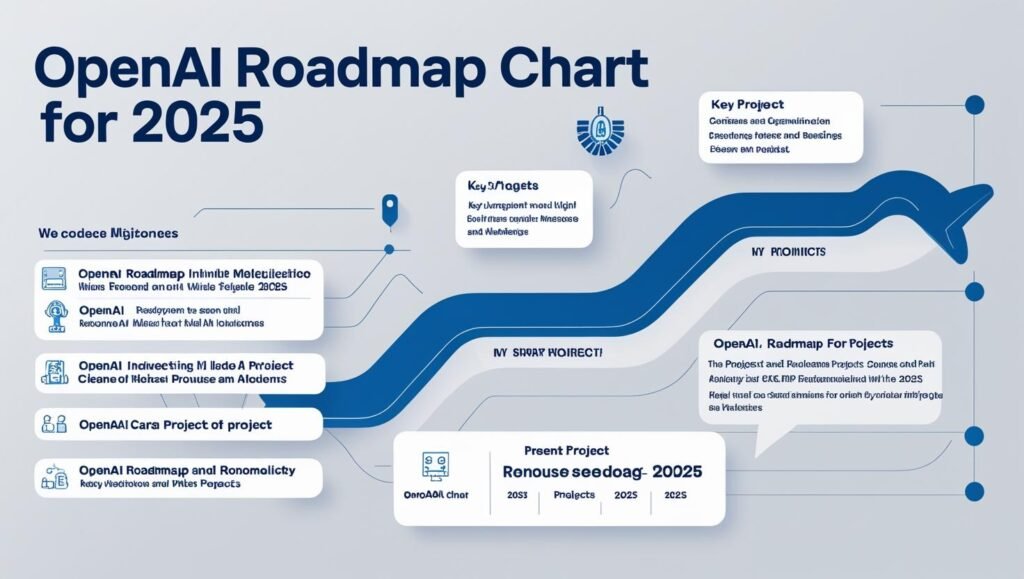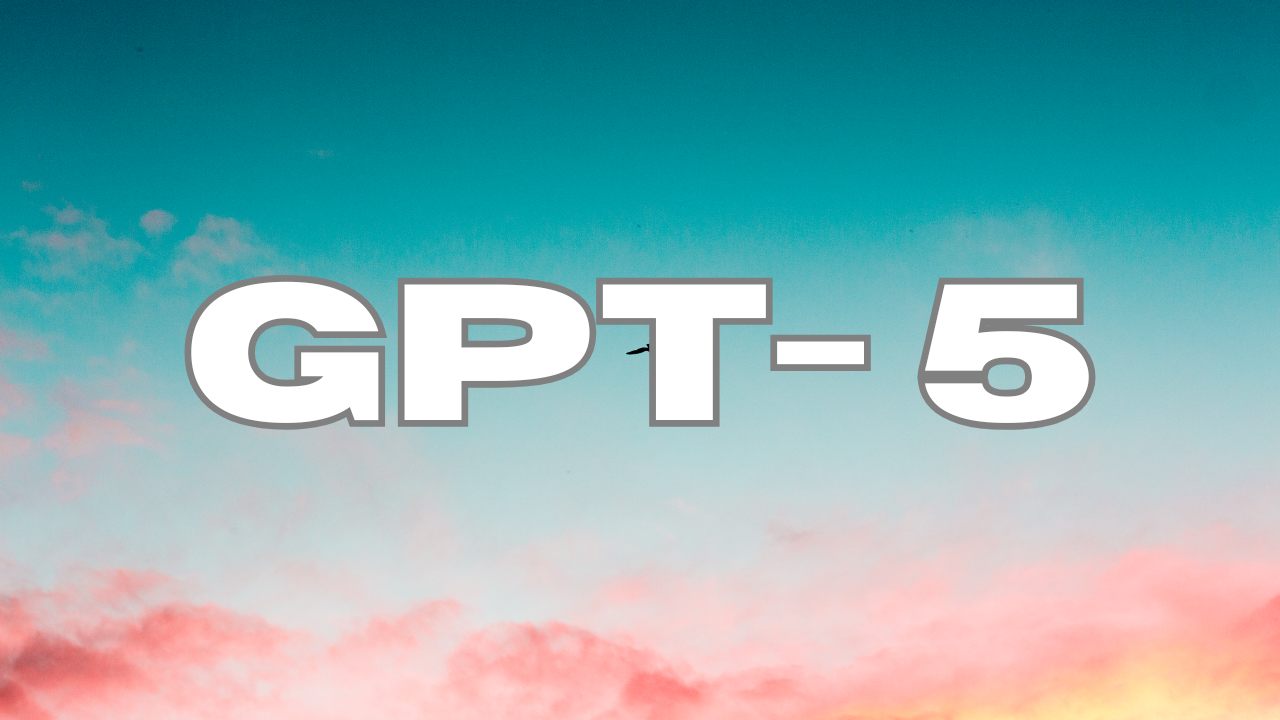Introduction
OpenAI has rapidly evolved into one of the most influential players in artificial intelligence, revolutionizing how we interact with machines. But as the world embraces AI more deeply, the question arises: what’s next for OpenAI?
From cutting-edge models like ChatGPT-5 to a growing emphasis on AI safety, OpenAI’s roadmap reveals a vision that could redefine global communication, creativity, and even governance. This article dives into the OpenAI GPT roadmap and future models, outlines its global impact, and explores what users, developers, and businesses can expect from this rapidly advancing tech giant.

OpenAI’s Mission and Vision for the Future
At its core, OpenAI aims to ensure that artificial general intelligence (AGI) benefits all of humanity. Unlike many companies focusing solely on innovation or profit, OpenAI’s foundation rests on ethics, alignment, and global accessibility.
According to insights shared on the official OpenAI blog, the company is doubling down on:
- Creating systems that align with human values
- Maximizing transparency and interpretability
- Driving collaboration with governments and institutions worldwide
Key priorities on OpenAI’s strategic radar:
- Reducing algorithmic bias in AI-generated content
- Expanding access to AI tools in underserved regions
- Establishing AGI safety standards that can scale globally
By focusing on trust, ethics, and responsibility, OpenAI is setting the tone for future development of intelligent systems that truly work for everyone — not just those with technical expertise.
Similar to OpenAI’s approach, Apple has also outlined its long-term plans—check out Apple’s AI roadmap through 2030 for a comparative view.
GPT Models and the Future of Language AI
The evolution of the GPT (Generative Pre-trained Transformer) series remains central to OpenAI’s strategy. After successfully launching GPT-4 and GPT-4 Turbo, OpenAI is progressing toward its most advanced model yet: ChatGPT-5.
Each iteration of the GPT line has improved:
- Language fluency and coherence
- Reasoning capabilities
- Memory retention and personalization
- Speed and cost-efficiency
What ChatGPT-5 Means for AI Capabilities
While OpenAI hasn’t officially disclosed full specifications, ChatGPT-5 is expected to deliver:
- Advanced long-term memory and user context retention
- Multimodal support, including real-time image, video, and voice processing
- Better factual accuracy and reduced hallucinations
- Greater plugin integration and developer control
ChatGPT-5 will likely serve as the base for enterprise AI applications, AI agents, and task automation tools — reshaping how industries operate.
A Brief Timeline: OpenAI's Language Model Evolution
| Model | Year Released | Key Features |
| GPT-1 | 2018 | Proof of concept |
| GPT-2 | 2019 | Text generation at scale |
| GPT-3 | 2020 | API integration, major leap |
| GPT-3.5 | 2022 | Powers ChatGPT |
| GPT-4 | 2023 | Multimodal, more accurate |
| GPT-4 Turbo | Late 2023 | Faster and cheaper |
| ChatGPT-5 | Expected 2025 | Memory, multimodality, plugins |
The Role of AI Safety in OpenAI’s Strategy
AI advancement brings incredible potential — but also new risks. OpenAI is actively addressing safety concerns with a layered approach to AI alignment, model governance, and misuse prevention.
Key safety strategies include:
- Reinforcement learning from human feedback (RLHF)
- Red-teaming: ethical hacking to test harmful outputs
- Third-party audits for bias, misuse, and vulnerabilities
- Global partnerships to study the social impact of AGI
AI safety isn’t just about avoiding harmful answers — it’s about building systems that understand nuanced human intent, adapt responsibly, and promote fairness.
As OpenAI's tools become more powerful, these safeguards are becoming even more critical, especially in education, healthcare, finance, and defense.
Global Reach and Geo-AI Development
OpenAI’s mission isn’t limited to English-speaking or Western markets. It is now focused on building truly global AI solutions that scale across geographies, cultures, and languages.
Ongoing global initiatives:
- Model localization: Adapting GPT to major world languages
- Collaborations with global universities to develop region-specific AI tools
- Expanding access to ChatGPT Pro in countries across Asia, Africa, and South America
- Policy discussions with regulators in the EU, UK, and Middle East
OpenAI’s geo-targeted strategy emphasizes fairness, accessibility, and inclusion — values often overlooked in AI development.
Real-World Applications of OpenAI’s Tools
OpenAI’s roadmap isn’t just theoretical — its technologies are already reshaping industries worldwide.
Examples of use cases:
- Education: AI tutors and custom lesson planning
- Healthcare: Drafting patient instructions, summarizing medical data
- Marketing: Copywriting, ad testing, brand tone analysis
- Customer Service: AI chatbots with memory for personalized support
- Software Development: Tools like Codex assist in real-time code writing
With ChatGPT-5, these applications are expected to grow more advanced, context-aware, and interactive.
How to Stay Updated on OpenAI’s Future
The best way to track OpenAI’s updates and gain early access is to stay connected to its ecosystem.
Here’s how you can stay in the loop:
- Subscribe to ChatGPT Pro to access new features first
- Follow the OpenAI blog for major announcements
- Join developer forums and Discords discussing OpenAI API usage
- Watch for regulatory disclosures and research papers on arXiv or SSRN
💡 Pro Tip: Subscribing to ChatGPT Pro not only unlocks GPT-4 Turbo but may give you early previews of ChatGPT-5 as OpenAI rolls out beta features.
Frequently Asked Questions About OpenAI’s Roadmap
What’s next for OpenAI after GPT-4?
OpenAI is working on ChatGPT-5, enhanced memory features, better multimodal capabilities, and stronger safety frameworks. It’s also investing in partnerships for AGI governance.
When will ChatGPT-5 be released?
While there’s no official launch date, industry analysts suggest it could arrive in late 2025, with beta features available first to ChatGPT Pro users and enterprise partners.
How is OpenAI ensuring AI safety?
OpenAI uses RLHF, third-party audits, and extensive internal testing. They also collaborate with global researchers to align AI outputs with human ethics and social values.
Will OpenAI remain open-source?
OpenAI shares some research but has limited model release for safety reasons. With future models like ChatGPT-5, controlled access is likely to continue to prevent misuse.
Final Thoughts
As OpenAI advances along its GPT roadmap, it’s clear that this isn’t just about smarter chatbots — it’s about reshaping how humans interact with information, machines, and each other.
With the arrival of ChatGPT-5, global accessibility, and AI safety at the core, OpenAI’s innovations are poised to impact every industry, every region, and every person.
Stay curious, stay informed — and don’t forget to subscribe to ChatGPT Pro to experience the future before the rest of the world does.







